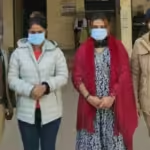In a troubling development, Kansas is currently grappling with a significant tuberculosis (TB) outbreak that has raised concerns among public health officials and local communities. The outbreak, which has affected multiple counties, has led to a rise in the number of reported TB cases across the state, sparking a comprehensive response from health authorities.
What is Tuberculosis?
Tuberculosis is a contagious disease primarily affecting the lungs, though it can spread to other parts of the body. The bacterium Mycobacterium tuberculosis causes TB, and it spreads through the air when an infected person coughs, sneezes, or talks. Symptoms of TB include a persistent cough, night sweats, fever, and weight loss. While TB is treatable with antibiotics, if left unchecked, it can be deadly.
The Kansas Outbreak: Timeline and Impact
Health experts began noticing a spike in TB cases in Kansas in recent months. Local clinics and hospitals have reported a higher-than-usual number of TB diagnoses, particularly in rural counties. As of now, the Kansas Department of Health and Environment (KDHE) has confirmed dozens of new cases, with officials working diligently to track down potential contacts of those infected.
This outbreak has led to an increased awareness campaign aimed at encouraging residents to get tested and seek treatment if necessary. Local public health units are also focusing on educating the public about the symptoms and preventive measures for tuberculosis.
Why the Surge in Cases?
The exact cause of the surge in TB cases in Kansas is still under investigation. Experts speculate that a combination of factors, including delayed medical visits during the COVID-19 pandemic, may have contributed to the rise. Additionally, the spread of TB is often more prominent in populations with limited access to healthcare, where the disease can go undiagnosed for longer periods.
Health Authorities Respond to the Outbreak
To combat the growing outbreak, the KDHE has launched a coordinated response plan, which includes expanded testing in high-risk areas and the provision of free or low-cost TB screenings to residents. Health officials are also working closely with local doctors and hospitals to ensure that patients are diagnosed early and receive appropriate treatment.
“Early detection is key to controlling the spread of tuberculosis,” said Dr. Mary Anderson, a leading health official in Kansas. “Our goal is to identify and treat cases as quickly as possible to prevent further transmission.”
Preventing the Spread of Tuberculosis
Preventing the spread of TB requires a combination of personal vigilance and community efforts. Health officials advise anyone experiencing symptoms such as a persistent cough, unexplained weight loss, or night sweats to seek medical attention immediately. Those who are diagnosed with TB are typically required to undergo a regimen of antibiotics, and it is crucial to complete the full course of treatment to prevent the disease from returning.
Public health campaigns are also focusing on improving awareness in schools, workplaces, and community centers, as these environments can sometimes amplify the transmission of infectious diseases like TB.
The tuberculosis outbreak in Kansas has underscored the need for heightened awareness and preventative measures, especially in rural and underserved areas. As health officials continue their efforts to control the outbreak, residents are encouraged to stay informed and take necessary precautions to protect themselves and their communities.
For those concerned about TB or who believe they may have been exposed, the KDHE urges them to contact their local health department for information on testing and treatment options. Public health experts are optimistic that with early detection and proper treatment, Kansas can effectively curb the spread of this contagious disease.
Stay tuned for updates as health authorities continue to monitor and address the situation.








